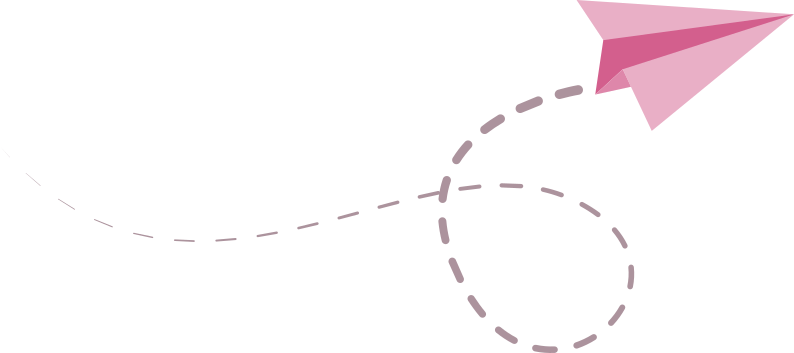Create Effective Landing Pages
5 Steps to Create Effective Landing Pages and Boost Your Website’s Conversion Rates

Creating effective landing pages is crucial for any business that wants to boost their website’s conversion rates. Here are five steps you can take to create landing pages that are both effective and engaging:
- Define your target audience: Before creating your landing page, it’s important to understand who your target audience is. Knowing your audience will help you create content that resonates with them and increases the chances of conversion.
- Craft a compelling headline: A strong headline is key to grabbing your audience’s attention and keeping them engaged. Make sure your headline is clear, concise, and highlights the main benefit of your product or service.
- Keep it simple: Your landing page should be easy to navigate and understand. Avoid clutter and keep the focus on your main message. Use bullet points or short paragraphs to break up the content and make it more digestible.
- Use high-quality visuals: Visuals are a great way to enhance your landing page and make it more appealing. Use high-quality images or videos that advertise your product or service and support your message.
- Include a clear call-to-action: A call-to-action (CTA) is a prompt that encourages your audience to take a specific action, such as signing up for a newsletter or making a purchase. Make sure your CTA is clear and prominently displayed on your landing page.
By following these steps, you can create landing pages that effectively communicate your message and drive conversion rates for your business.
Why Landing Pages Matter and How They Can Impact Your Business
Landing pages are an essential part of any online business strategy. They are standalone web pages that are designed to capture the attention of potential customers and encourage them to take specific actions, such as making a purchase, filling out a form, or signing up for a newsletter. Here are some reasons why landing pages matter and how they can impact your business:
- Increased conversion rates: Landing pages are designed to be focused and specific, so they are more effective at converting visitors into customers than general website pages. By providing a clear call to action and removing distractions, landing pages can help increase your conversion rates.
- Improved ad campaign performance: If you are running online ads, sending visitors to a dedicated landing page can improve the performance of your campaigns. By aligning your ad copy and landing page content, you can create a seamless experience that encourages visitors to take action.
- Better data collection: Landing pages can also be used to collect valuable data about your audience. By including forms or surveys on your landing pages, you can gather information about your visitors that can be used to improve your marketing efforts.
- Increased credibility: Having well-designed landing pages can also help improve the credibility of your business. By creating a professional and engaging experience for visitors, you can build trust and establish your brand as a leader in your industry.
Overall, landing pages are a powerful tool for any online business. By creating focused and effective pages, you can improve your conversion rates, collect valuable data, and establish your brand as a dependable and trustworthy source for your audience.
Step 1: Define the Goal of Your Landing Page and Whom You’re Targeting
 Landing page
Landing pageWhen it comes to creating a landing page, having a clear goal in mind is essential. You want to ensure that the content and design of the page are tailored to your specific audience and their needs. Here are some additional tips to consider:
- Think about the desired action you want your visitors to take once they arrive on your page. Is it to make a purchase, sign up for a newsletter, or fill out a form?
- Consider who your target audience is and what their pain points or desires may be. This will help you make messaging and content that relates to them.
- Use data and analytics to understand your audience’s behavior and preferences. This can inform the design and layout of your landing page.
- Keep it simple and focused. Avoid clutter and distractions that may take away from your main goal.
Step 2: Craft a Compelling Headline and Subheadline that Grabs Attention
A compelling headline and subheadline can make a huge difference in whether or not a reader will click through to read your content. Here are some tips for crafting a headline and subheadline that will grab attention:
- Keep it short and to the point: Your headline should be no more than 10-12 words, and your subheadline should be no more than 20-25 words.
- Use strong, active verbs: Verbs like “grab,” “discover,” and “unleash” can help make your headline more engaging.
- Highlight the benefits: Your headline and subheadline should make it clear what the reader will gain from reading your content.
- Use numbers or statistics: Including a number or statistic in your headline can help make it more specific and compelling.
- Make it unique: Avoid using generic or cliché language. Instead, try to come up with a headline and subheadline that are unique to your content and will stand out to readers.
Remember, your headline and subheadline are the first things a reader will see, so it’s important to make them count. Take the time to craft a compelling headline and subheadline that will grab attention and entice readers to click through and read your content.
Step 3: Design an Engaging Layout with Clear Call-to-Actions (CTAs)
To design an engaging layout with clear call-to-actions, it is important to keep in mind the purpose of your website or app. Whether you want your audience to make a purchase, sign up for a newsletter, or simply explore your content, your design should support these goals. Here are some tips to help you create an effective layout:
- Use a clear and concise headline that communicates the main message of your website or app.
- Make sure your design is visually appealing and easy to navigate, with a clear hierarchy of information.
- Use colors, fonts, and images that align with your brand and message.
- Place your call-to-actions in strategic locations, such as the top of the page or next to important information.
- Use action-oriented language for your CTAs, such as “Sign Up Now” or “Get Started”.
- Test and optimize your layout to ensure it is effective for your audience.
By designing an engaging layout with clear call-to-actions, you can guide your audience towards the actions that you want them to take and ultimately achieve your goals.
Step 4: Write a Persuasive Copy that Addresses Pain Points and Offers Solutions
 Writing persuasive copy
Writing persuasive copyWhen it comes to writing persuasive copy, it’s important to keep in mind the pain points of your target audience. What problems are they facing that your product or service can solve? Understanding these pain points and offering solutions is key to crafting effective copy that resonates with your audience.
Here are some tips for writing persuasive copy that addresses pain points and offers solutions:
- Begin by identifying your target audience and their pain points. This could involve conducting market research or speaking directly with customers.
- Once you have a clear understanding of their pain points, focus on the benefits of your product or service that directly address those pain points. For example, if you’re selling a weight loss program, emphasize how your program can help people overcome the frustrations of yo-yo dieting and achieve lasting results.
- Use persuasive language that appeals to the emotions of your audience. This could involve using powerful adjectives, telling relatable stories, or emphasizing the urgency of their problem.
- Make sure your copy is easy to read and understand. Use short sentences, bullet points, and clear headings to break up the text and make it more digestible.
- Finally, include a clear call to action that encourages your audience to take action. This could involve signing up for a free trial, scheduling a consultation, or making a purchase.
Step 5: Test and Optimize Your Landing Page for Higher Conversion Rates
After creating a landing page, it’s important to test and optimize it to ensure that it is effectively converting visitors into customers. Here are some tips to help you test and optimize your landing page:
- Use A/B testing to compare different versions of your landing page and determine which one is more effective. This involves creating two versions of your landing page with one variable changed (such as the headline or call-to-action) and then testing them both to see which one performs better.
- Analyze your website analytics to see where visitors are coming from and which pages they are spending the most time on. This can help you identify areas of your landing page that may need improvement.
- Make sure your landing page is mobile-friendly. With more and more people using mobile devices to browse the internet, it’s important that your landing page is optimized for smaller screens.
- Use clear and concise language on your landing page. Avoid using jargon or technical terms that visitors may not understand.
- Make it easy for visitors to take action by including a clear call-to-action (CTA) button on your landing page. This could be a button that says “Sign Up Now” or “Learn More.”
By testing and optimizing your landing page, you can ensure that it is as effective as possible in converting visitors into customers.
Create Effective Landing Pages
Create Effective Landing Pages
Create Effective Landing Pages
Create Effective Landing Pages
Create Effective Landing Pages
Create Effective Landing Pages
Create Effective Landing Pages
Create Effective Landing Pages
Create Effective Landing Pages
Create Effective Landing Pages
Create Effective Landing Pages
Create Effective Landing Pages
Create Effective Landing Pages
Create Effective Landing Pages
Create Effective Landing Pages
Create Effective Landing Pages